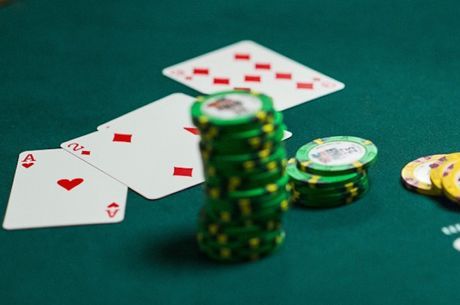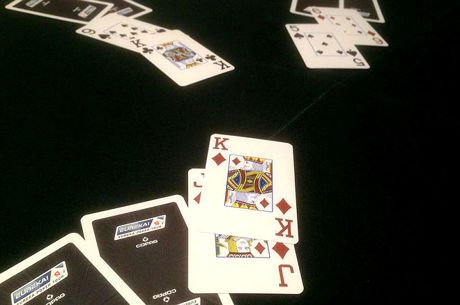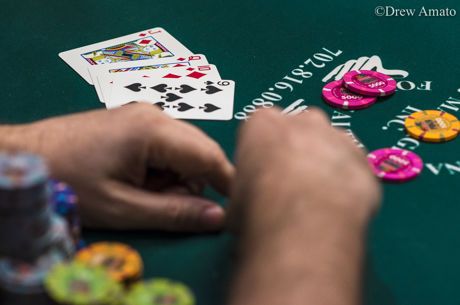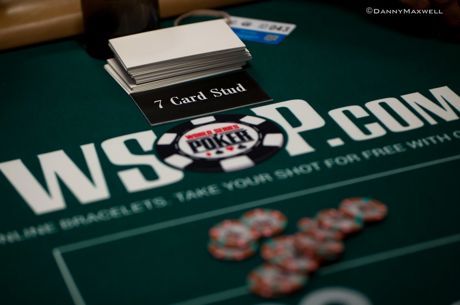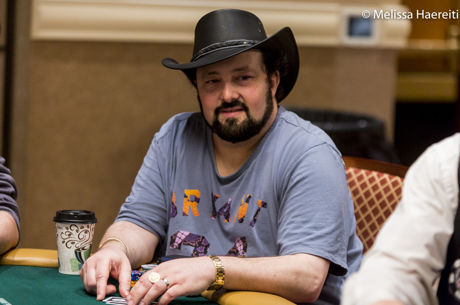Stud Poker Strategy - X-Ray Vision, Part II

In my first installment of this two-part series I wrote about the ability to see through the backs of your opponents' cards – as if you had those X-Ray glasses advertised in the back of comic books. I explained that your opponents' cards could be revealed by a combination of their exposed cards and their betting action. I provide you now with another example of this skill.
You have a split pair of Aces with a 6 kicker. One Ace is dead. You raised on third street and got two callers. On fourth you caught an off suit 3. Your opponents show 9♣ J♠ and 6♥ 8♣. You begin the betting again, with your Ace being the high card showing. They each call.
You are perceived as a relatively straightforward, tight-aggressive sort of player. You don't know either of your opponents well but they seem to be typically thoughtful mid-limit players. They don't seem like idiots to you. They've been selective in the hands they've played so far – and they haven't been wild.
On fifth street you hit a second 3. One of you opponents gets a 3♥; the other gets a Q♥. The board looks like this:
YOU: (A♣ 6♠) A♠ 3♣ 3♠
SUE: (x x ) 6♥ 8♣ 3♥
JOE: (x x ) 9♣ J♠Q♦
You have Aces up. You're high on board. You bet.
Sue calls. Joe raises.
Now put on those X-Ray glasses. What do you see?
Sue's call you understand. She's probably going for a flush, having started with a 3-flush, deciding to call your bet on fourth and see if she hit a flush draw on fifth. She knows you probably have the two pair – but since she has a flush draw she figures it's a good call. You put her on the flush draw. But what is Joe likely to have?
A new poker player might say that it's impossible to know what he has. People raise as a bluff, don't they? He could be bluffing.
But you have the experience and knowledge that works like an X-ray as you peer at your opponent and his cards. He's very unlikely to be bluffing here, isn't he? There's already a caller, and he knows that you're unlikely to fold if you have the Aces Up that you're representing. You must give him credit for being on a legitimate hand.
He's likely to have either hit his straight, having started: 8-9-T, then improved to a 4-straight on the turn. Or maybe he started with a wired pair of Queens and just hit trip Queens. Your glasses may not be quite able to make out the specific hand he has – but you can surely see that he's loaded.
Now comes the hard part – but the part that must be coupled with your reading ability. You must figure out what to do based on your read.
In either case, if one opponent may have hit a straight or trips, and the other player is on a flush draw, you're very far behind even though your hand has markedly improved by hitting a second pair. Your insight has helped you see what your opponents are likely to have. But do you have the discipline to do the right thing?
You have three cards that will give you a full house – since one Ace, one 3, and one 6 are dead. When you add up the cards that were folded, the cards that are exposed, and your cards; you figure out that there are 39 unseen cards. Three of those 39 cards will give you a full house, meaning you are slightly worse than a 13:2 long shot to hit your hand by the river. And, if you're raising opponent now has trip Queens, you're even more of a long shot to win – since he might hit Queens full. This would mean that two of your full houses would lose – lowering your chances of winning with your hand to about 10:1 against.
The pot's only offering you about 9:2 odds for your call. That makes this a bad call. You should fold.
It's sure tempting to call. But the advantage of the X-Ray glasses can only become profitable if you can follow through with your read with the right play.





